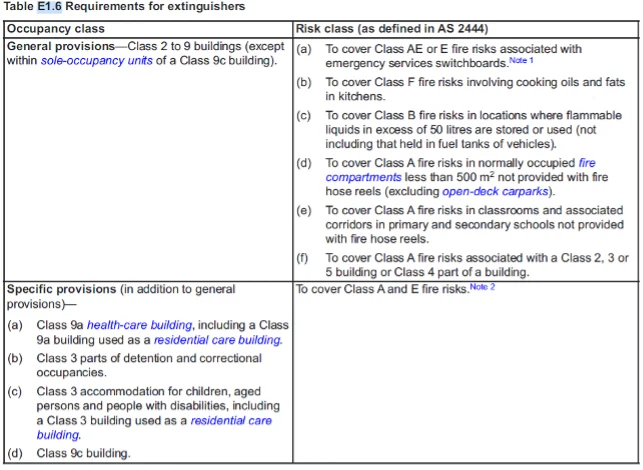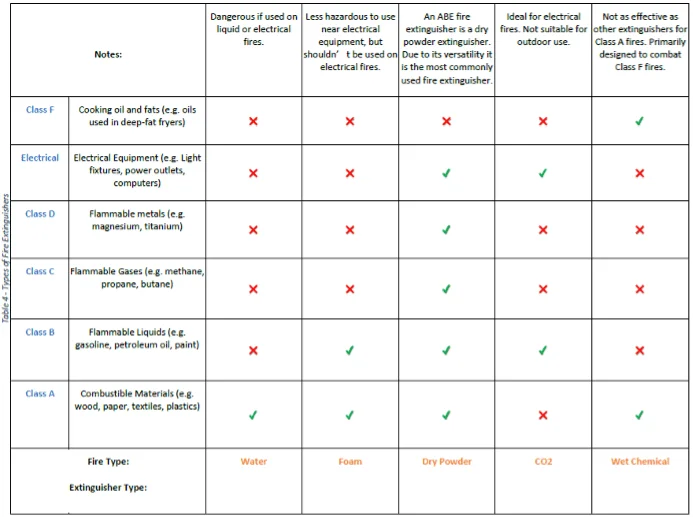How to Apply Building Code and Standards to Low Rise Buildings
Overview
The examples below are fictional, however, it outlines some structure and key steps in understanding different building components and how to ensure compliance with the BCA Performance requirements.
General process
1. Identify the building class of the project (according to NCC V1 A6.0)
2. Performing specific clause analysis by referring to the correct Volume and section of the NCC
3. Refer to the relevant sections of requirements and check if the project meets the minimum requirements (Deemed-to-satisfy Provisions).
Case Study 1
1. Identify the building class of the project
A single-story residential house in Melbourne, Victoria, installation of the smoke alarms.
2. Refer to the correct Volume of the NCC
Class 1a (according to NCC V1 A6.0)
3. Refer to the relevant sections of requirements and check if the project meets the minimum requirements.
For installation of smoke alarm, the relevant sections for Class 1 buildings are: Clause 3.7.5.1, Clause 3.7.5.2, Clause 3.7.5.3, Clause 3.7.5.5
(Pay attention to some of the clauses are used for other building classifications)
Refer to the details in the requirement and check all the minimum dimension of installation, the reference from figures provided in the NCC are useful as well. For example:
3.7.5.5 Installation of smoke alarms
Smoke alarms required by 3.7.5.3 and 3.7.5.4 must be installed on or near the ceiling, in accordance with the following:
(a) Where a smoke alarm is located on the ceiling it must be:
(i) a minimum of 300 mm away from the corner junction of the wall and ceiling; and
(ii) between 500 mm and 1500 mm away from the high point and apexes of the ceiling, if the room has a sloping ceiling.
(b) Where (a) is not possible, the smoke alarm may be installed on the wall, and located a minimum of 300 mm and a maximum of 500 mm off the ceiling at the junction with the wall.
For Performance requirement of smoke alarm, referrer to P2.3.2 section in NCC Volume 1:
P2.3.2 Automatic warning for occupants
In a Class 1 building, occupants must be provided with automatic warning on the detection of smoke so that they may evacuate in the event of a fire to a place of safety.
Case Study 2
1. Identify the building class of the project
A single-story residential house in Darwin and a new steps need to be built.
2. Refer to the correct Volume of the NCC
Class 1a (according to NCC V1 A6.0)
3. Refer to the relevant sections of requirements and check if the project meets the minimum requirements.
For installation of smoke alarm, the relevant sections for Class 1 buildings are: Clause 3.9.1.0, Clause 3.9.1.1, Clause 3.9.1.4, Clause 3.9.1.5, Clause 3.9.1.6
(Pay attention to some of the clauses are used for other building classifications)
Refer to the details in the requirement and check all the minimum and maximum height of stairs, the reference from Table 3.9.1.1 provided in the NCC are useful as well. Moreover, different types of stairs have different requirements on the step heights.

For Performance requirement of smoke alarm, referrer to P2.5.1 section in NCC Volume 1. The verification methods V2.5.1 need to be applied in this case.
P2.5.1 Movement to and within a building
So that people can move safely to and within a building:
i. Walking surfaces must have safe gradients; and
ii. Any stairway or ramp must:
a. Have suitable handrails where necessary to assist and provide stability to people using the stairway or ramp; and
b. Have suitable landings to avoid undue fatigue of users; and
c. Be suitable for safe passage in relation to the nature, volume and frequency of likely usage; and
d. Have slip-resistant walking surfaces on-ramps, and on stairway treads or near the edge of the nosing.
V2.5.1 Wire barriers
Compliance with P2.5.2(f) and (g) for wire barriers is verified when the wire barrier passes the test described below:
Application
The test must be carried out on either:
a. A prototype of a wire barrier that is identical to that proposed to be installed on site; or
b. A wire barrier installed on site.
Test equipment
The test equipment must consist of the following:
a. A horizontally suspended 125 mm diameter, 405 mm long cylinder of 1 mm thick steel having a highly polished 105 mm long cone at one end with a 20 mm diameter flat leading edge to which an eyebolt is fixed.
b. A sufficiently flexible horizontal cable with mechanisms capable of applying and measuring tension of 150 N (or a 15.3 kg weight suspended over a low friction pulley) is to be attached to the eye bolt (see Figure V2.5.1).
c. A mechanism capable of measuring the tension force applied to each wire.
Case Study 3
1. Identify the building class of the project
A 3-story Apartment block is being built in Melbourne. Portable fire extinguishers are going to fit out the building.
2. Refer to the correct Volume of the NCC
Class 2 (according to NCC V1 A6.0)
3. Refer to the relevant sections of requirements and check if the project meets the minimum requirements.
For installation of smoke alarm, the relevant sections for Class 2 buildings are: E1.6(a), E1.6(b)
Refer to the details in the requirement and check all the minimum area for each portable extinguisher (e.g., internal fire hydrants are not installed to serve any fire compartment with a floor area greater than 500m2), more detail in table E1.6 which provided in the NCC Volume 1 as shown below:

For Performance requirement of fire extinguishers, referrer to EP1.2section in NCC Volume 1:
EP1.2 Fire extinguishers
Fire extinguishers must be installed to the degree necessary to allow occupants to undertake an initial attack on a fire appropriate to:
a. The function or use of the building; and
b. Any other fire safety systems installed in the building; and
c. The fire hazard.
For NCC DTS Provisions, refer to sections: E1.1 to D1.10, G3, G4, G6, H1 and H3. Moreover, the type of extinguishers needs to be selected carefully based on the possible fire types in the nearby area, for example CO2 extinguishers are only effective on the fire on electrical equipment (light, power outlets) and flammable liquids (gasoline, paint).

Bibliography
Building classification from VBA official. Retrieved from: https://www.vba.vic.gov.au/building/regulatory-framework/building-classes.
Building Code of Australia. (2019). National Construction Code – Volume 1 (ABCD). Australian Building Codes Board
Codes and standards. (2019). “Applying building codes and standards to low rise building projects” by Exner Education Pty Ltd.
